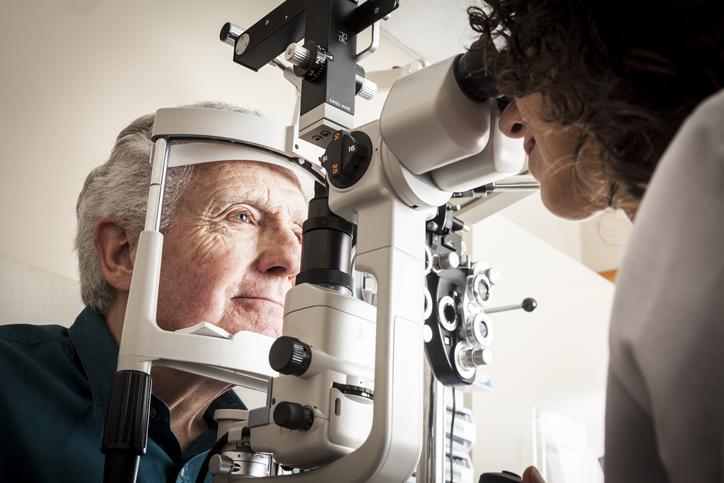
Learn about the two types of macular degeneration here.
If your elderly loved one has been diagnosed with macular degeneration, you’ll likely be faced with a number of concerns and questions. And you’re not alone; an approximate 11 million people in the U.S. have received the same diagnosis, and that number is expected to double by the year 2050. The Franklin home health care team at Live Free Home Health Care is on hand with the insight you need to more fully have an understanding of this disease and how to best help your senior loved one.
What is macular degeneration?
Age-related macular degeneration (ARMD) is a disease wherein the middle of the retina (the macula) is damaged, impacting central vision and the details needed in reading, driving a car, watching TV, and identifying the faces of other people. It is the most common cause of permanent central vision blindness in older individuals, having an effect on about 30% of adults age 75 and older. It’s worthwhile to know that macular degeneration will not likely cause complete blindness; peripheral vision remains undamaged.
What are the two kinds of macular degeneration?
ARMD can manifest in two varieties:
- Wet ARMD: Accounting for roughly 10 – 20% of all diagnoses, wet age-related macular degeneration results in a build-up of drusen – fat deposits – and an abnormality of the blood vessels beneath the retina. Both of these effects together induce retinal damage. Wet ARMD can advance swiftly and bring about extreme and irreversible loss of central vision.
- Dry ARMD: Dry ARMD makes up the greater part (up to 90%) of macular degeneration diagnoses. As with wet ARMD, drusen develops underneath the retina, creating a thinning of the macula and ultimate central vision loss. Progression is more gradual in this form of ARMD, but it can progress to wet ARMD.
In both kinds of ARMD, early diagnosis and continual monitoring are essential to protecting remaining vision.
How is ARMD diagnosed?
All older adults should get eye exams at least each year. To detect ARMD, the eye doctor will dilate the eyes and conduct a fundoscopy, fundus photography, and a visual acuity test. If ARMD is presumed, an added test, a fluorescein angiography, will probably be needed. In this test, dye is injected to look for any leakage in the blood vessels. The Amsler grid eye test is a quick and easy tool that can also be utilized at home as an initial step in determining if ARMD may be a possibility.
What options for treatment are available for ARMD?
While there’s currently no cure for macular degeneration, there are multiple treatment options the doctor may want to try to cease the progression of the disease:
- Antioxidants and zinc
- Afibercept
- Ranzibizumab injections
- Pegaptanib sodium injections
- Photodynamic therapy
- Bevacizumab injections
- Vision rehab and low vision aids
Is it possible to prevent macular degeneration?
Implementing healthy lifestyle decisions, like stopping (or not beginning) smoking, exercising regularly, following a nutritious diet that includes plenty of fruits, vegetables, and fish, sustaining a healthy weight and normal blood pressure, and wearing eye protection when outside, such as sunglasses and hats, may help reduce the chance of developing ARMD.
For a trusted partner in care for a senior with macular degeneration to provide help with transportation, medication reminders, meal preparation, light housework, and much more, contact the Franklin home health care professionals at Live Free Home Health Care any time at 603-217-0149.
